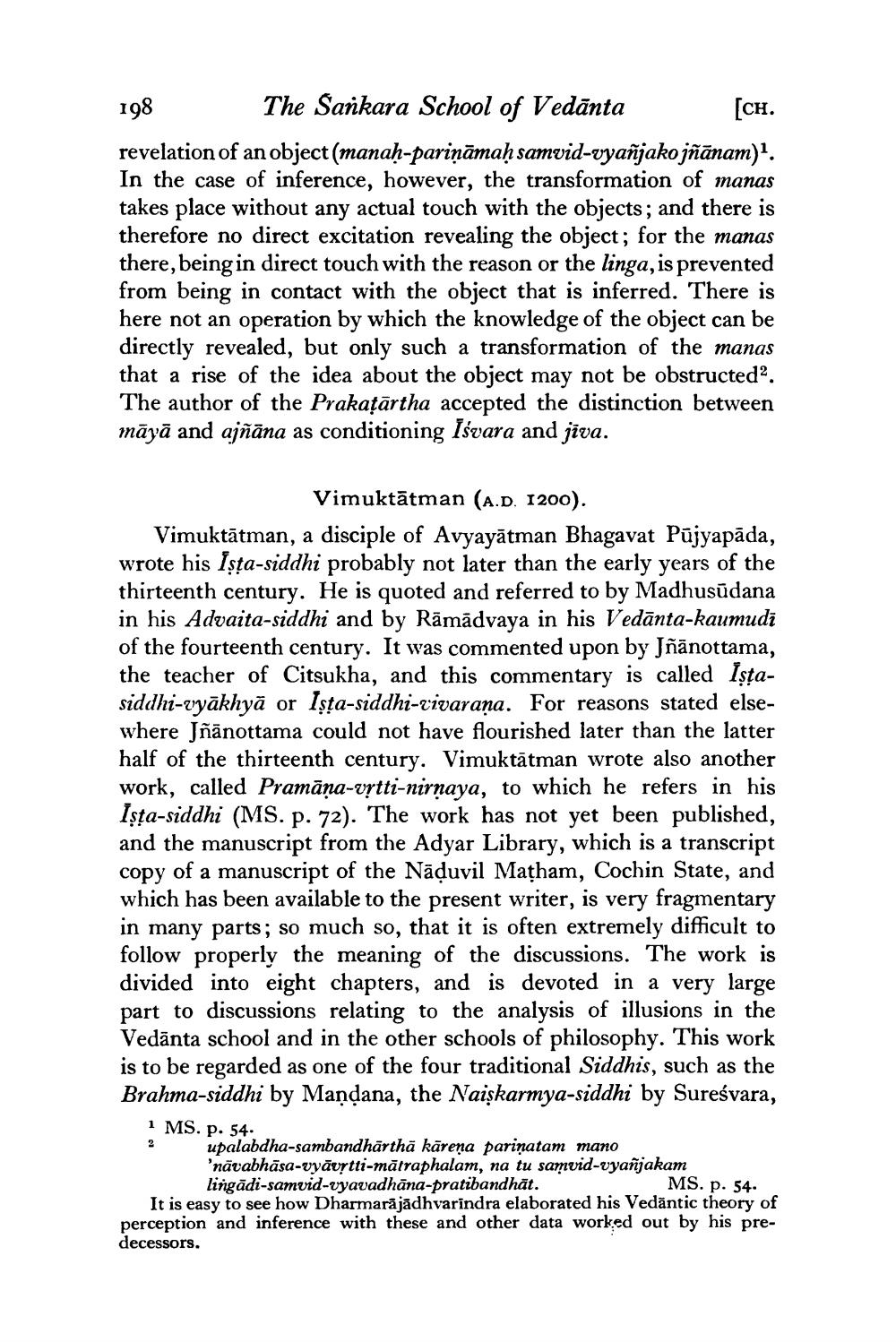________________
198
The Sankara School of Vedanta
[CH.
revelation of an object (manaḥ-pariņāmaḥ samvid-vyañjako jñānam)1. In the case of inference, however, the transformation of manas takes place without any actual touch with the objects; and there is therefore no direct excitation revealing the object; for the manas there, being in direct touch with the reason or the linga, is prevented from being in contact with the object that is inferred. There is here not an operation by which the knowledge of the object can be directly revealed, but only such a transformation of the manas that a rise of the idea about the object may not be obstructed2. The author of the Prakaṭārtha accepted the distinction between māyā and ajñāna as conditioning Išvara and jīva.
Vimuktātman (A.D. 1200).
Vimuktātman, a disciple of Avyayatman Bhagavat Pujyapāda, wrote his İṣṭa-siddhi probably not later than the early years of the thirteenth century. He is quoted and referred to by Madhusudana in his Advaita-siddhi and by Rāmādvaya in his Vedānta-kaumudi of the fourteenth century. It was commented upon by Jñanottama, the teacher of Citsukha, and this commentary is called Iṣṭasiddhi-vyakhyā or Ista-siddhi-vivarana. For reasons stated elsewhere Jñānottama could not have flourished later than the latter half of the thirteenth century. Vimuktātman wrote also another work, called Pramāṇa-vṛtti-nirnaya, to which he refers in his İşṭa-siddhi (MS. p. 72). The work has not yet been published, and the manuscript from the Adyar Library, which is a transcript copy of a manuscript of the Naduvil Matham, Cochin State, and which has been available to the present writer, is very fragmentary in many parts; so much so, that it is often extremely difficult to follow properly the meaning of the discussions. The work is divided into eight chapters, and is devoted in a very large part to discussions relating to the analysis of illusions in the Vedanta school and in the other schools of philosophy. This work is to be regarded as one of the four traditional Siddhis, such as the Brahma-siddhi by Mandana, the Naişkarmya-siddhi by Sureśvara,
1 MS. p. 54.
2
upalabdha-sambandhārthā kāreņa parinatam mano
'navabhāsa-vyāvṛtti-matraphalam, na tu samvid-vyañjakam lingadi-samvid-vyavadhana-pratibandhāt.
MS. p. 54.
It is easy to see how Dharmarajādhvarindra elaborated his Vedantic theory of perception and inference with these and other data worked out by his predecessors.




